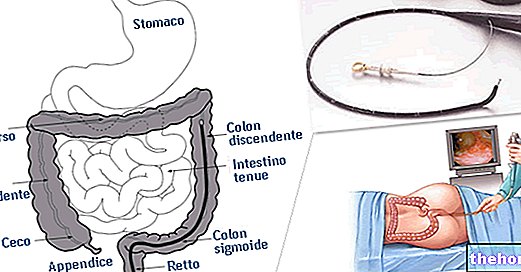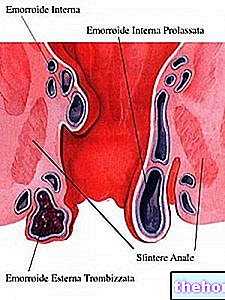Colon melanosis - otherwise known as colonic pseudomelanosis - is a benign condition, characterized by the appearance of more or less intense brownish shades on the colonic mucosa. The term melanosis is however improper, given that the brownish color - or even black in the most serious cases - is not linked to the increased synthesis of melanin, but to the permanence of protein and lipid substances (lipofuscin) inside the macrophages that populate the walls of this intestinal tract.
Colonic melanosis is diagnosed by colonoscopy or sigmoidoscopy; more rarely, the diagnosis is made following the microscopic examination of biopsy specimens of muscosa colica.

In the figure above, taken from the textbook "General and Applied Pharmacognosy by Alessandro Bruni, Ed. Piccin" we find a list of the main natural anthraquinone laxatives, ordered according to the power of their laxative effect and according to the importance of the relative contraindications. Not surprisingly that the two characteristics go hand in hand and that as one increases, the other increases as well. Still considering this widespread category of natural laxatives, the purgative effect also varies according to the conditions in which the plant has grown and the processing methods adopted to produce the drug. In synthetic laxatives, on the other hand, the active ingredient is purified and precisely dosed.
Colon melanosis is a benign condition and is no longer considered precancerous, although - especially in the past - it has been repeatedly associated with an increased risk of developing colorectal cancer.
In most cases, colonic melanosis appears due to chronic use of anthraquinone laxatives (see figure). In particular, the typical brownish shades of the colic mucosa begin to form after about four months of continuous use of these aids.
In addition to being essentially harmless, colonic melanosis is also reversible, as long as the use of anthraquinone laxatives is suspended and a different approach to the problem of constipation is adopted.
Other possible causes of colon pseudomelanosis include all conditions characterized by accelerated cell turnover. The presence of lipofuscins is in fact correlated with aging and apoptotic phenomena.
Anthraquinones can be considered prodrugs; in fact, once taken, they pass through the gastrointestinal tract without being absorbed; then, at the level of the large intestine - thanks to the intervention of the local bacterial flora - the anthraquinones are converted into their active form, strongly irritating to the colonic mucosa. The cell damage induced by anthraquinones, in addition to producing a laxative effect (increased secretion and of intestinal motility), creates apoptotic damage, with macrophage and accumulation of lipofuscin inside these cells of the immune system. Just this accumulation, as mentioned, is at the origin of the colon melanosis.




























